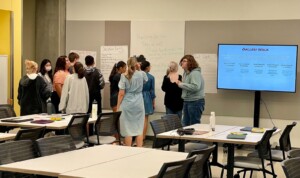5 charter authorizing strategies to max RttT
It’s time to rethink charter school authorization. There are 5,000 charter schools in the US (about 5% of the total number of schools) and a push from the Department of Education for more. Given that half of the charters aren’t any better than traditional public schools, there has been a push to tighten up authorizing (i.e., a multi-year performance contract to run an autonomous public school). In an effort to screen out weak proposals and applicants, the application process has become much longer (i.e., 18-24 months) and more bureaucratic.
Giant federal grant programs create an opportunity for states to introduce the next generation of authorizing. They should consider five distinct pathways:
1. Standard: first time applicants proposing a single school
2. Expedited: a short-form application with quick turnaround for operators of two or more high performing schools (with potential for multi-campus approvals)
3. Innovation: potential for conditional approval (i.e., shorter time frame with more review) for innovative school models that incorporate novel assessment systems, performance-based progress, unique staffing and compensation models, distributed learning (i.e., multiple locations including community resources), blended institutions (i.e., high school and college) and/or year-round learning.
4. Statewide: virtual operators seeking to enroll students statewide (or across a region under a reciprocal charter agreement)
5. Turnaround: a two step process that would 1) create a list of certified vendors and 2) match them with turnaround or restart opportunities
While states are updating their charter and online learning laws, creating a multiple pathways authorizing strategy would help to accelerate growth of high quality options for American students.






0 Comments
Leave a Comment
Your email address will not be published. All fields are required.